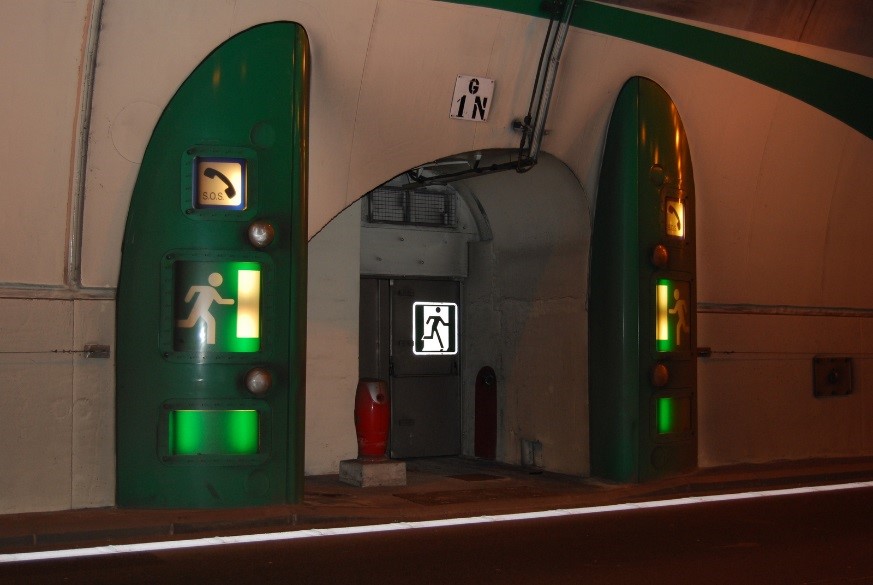
Road Tunnels Manual

Road Tunnels Manual
In twin-tube tunnels, links between the tubes known as “cross-bores” or “cross-passages” enable users to evacuate to a place of safety. Very often, these cross-passages are only accessible to pedestrians and the geometrical characteristics of cross-passage doors must facilitate pedestrian access.
Some tunnels also have cross-passages that are accessible to emergency service vehicles.
The characteristics of cross-passage doors (reaction and resistance to fire, air tightness, thermal insulation, etc.) must be adapted to regulations in force and must be consistent with the fire resistance performance of the structure surrounding the door.

Signs must be used to indicate the presence of cross-passage doors. They are usually illuminated for improved visibility and are located next to each door in the part of the tunnel open to traffic. They must be visible from both sides of the door: upstream and downstream.
Additional signage may also be used, such as:
Specific measures must be taken to ensure that in the event of fire, the smoke present in one tube does not spread to the other tube (airlock at each end of the cross-passage, which may be equipped with an over-pressure system).
The afore-mentioned characteristics can also apply to other evacuation facilities: passages with a direct link to the open air, links to an escape gallery or passages leading to an emergency shelter.